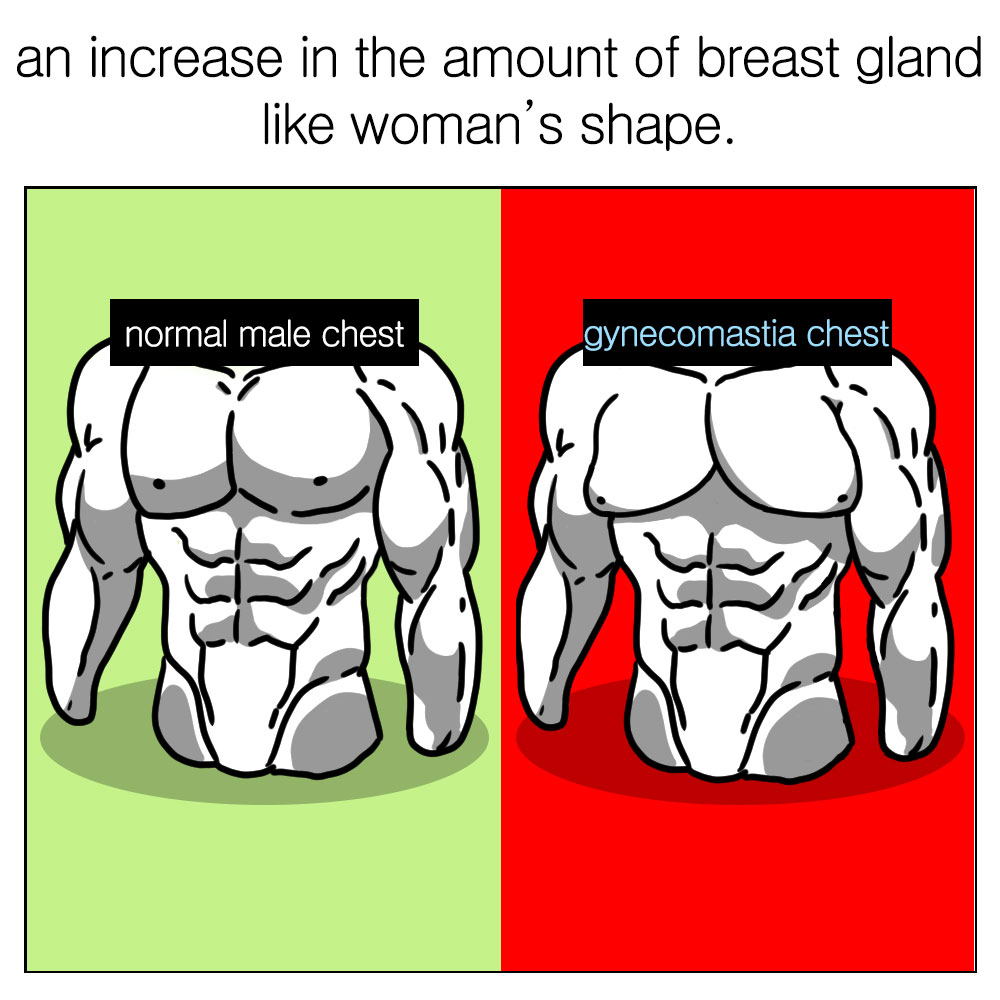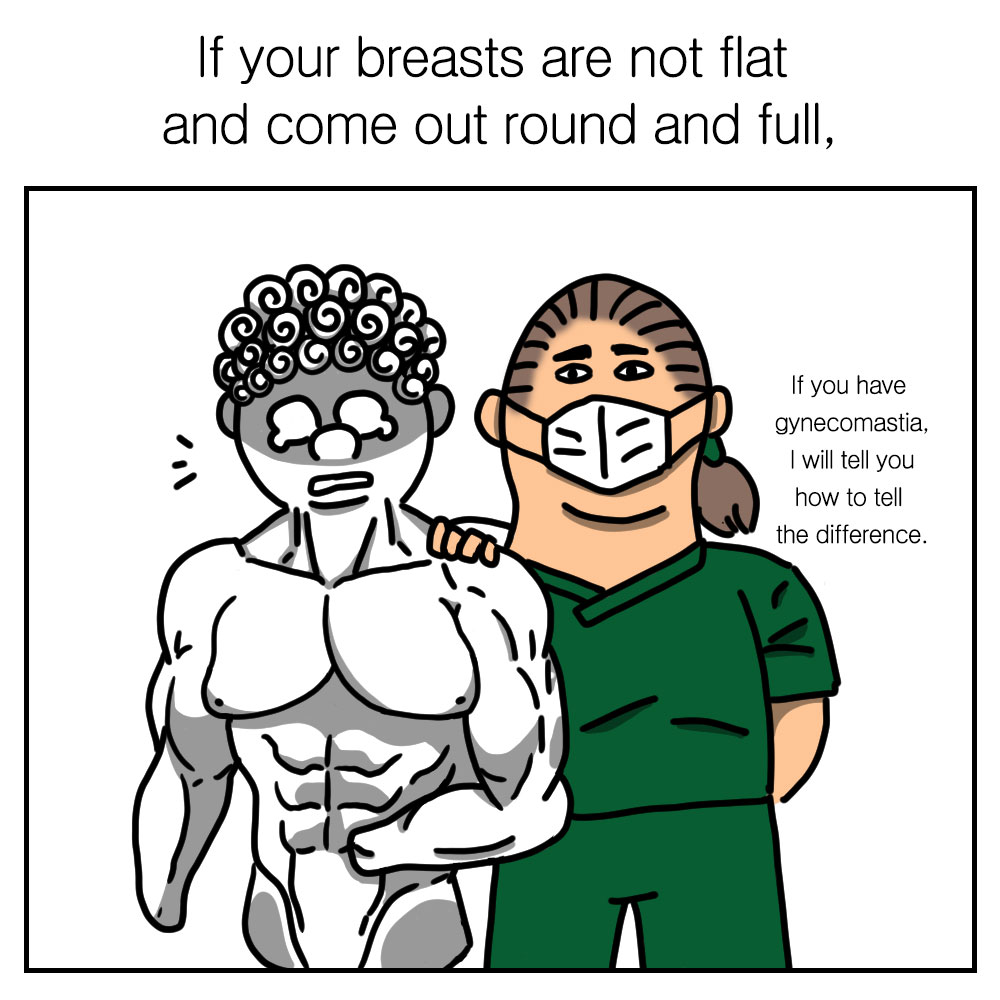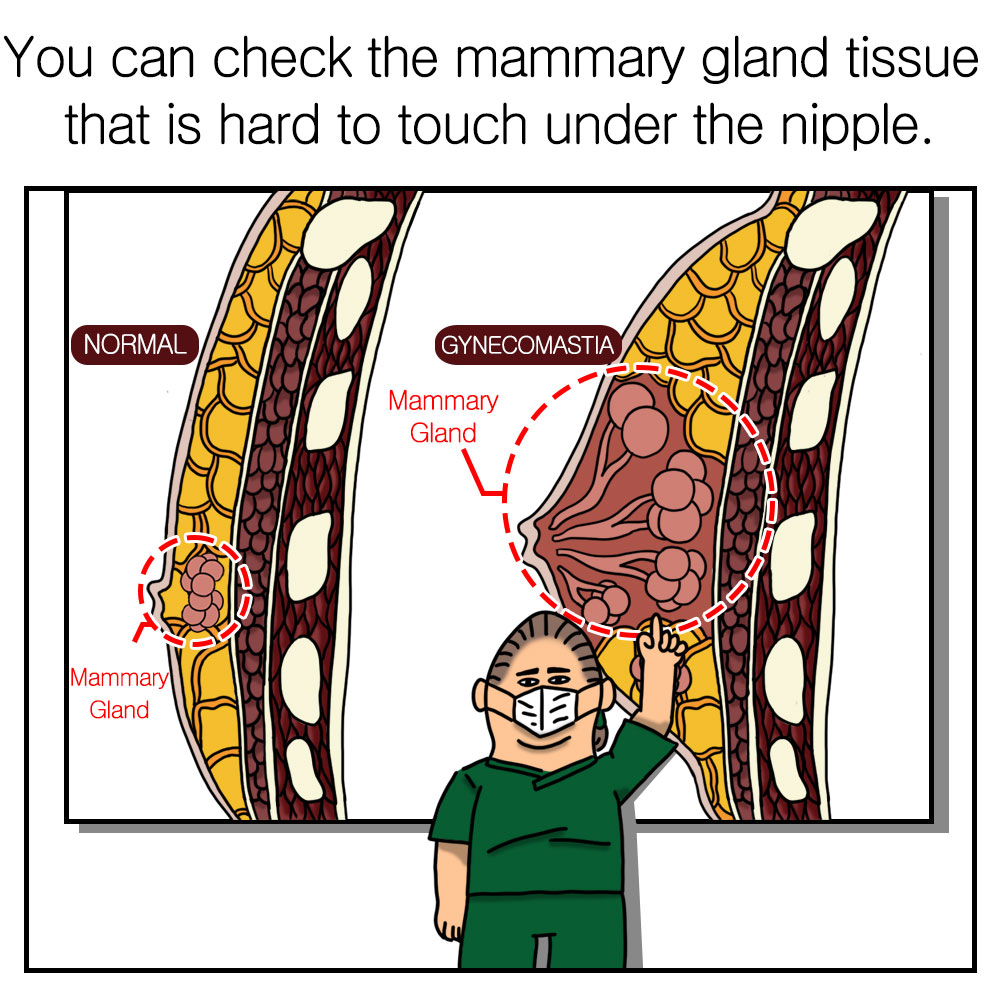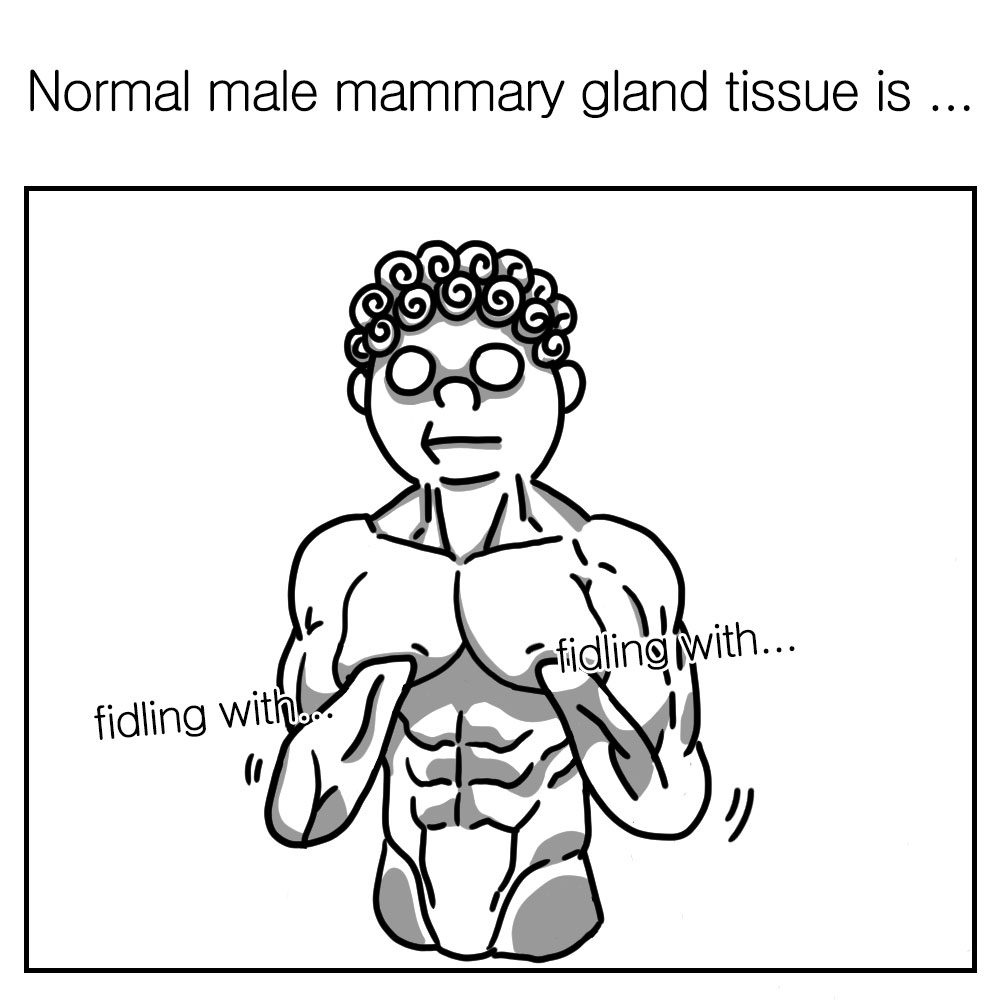
Gynecomastia is a condition in which a man’s chest develops a shape resembling that of a woman’s breast. It is typically caused by the development of mammary gland tissue beneath the areola.
There are two types of gynecomastia:
-
True Gynecomastia: Enlargement due to developed glandular tissue.
-
Pseudogynecomastia: Enlargement caused primarily by fat accumulation.
This guide will help you identify true gynecomastia through simple self-examination.

Gynecomastia แปลตามตัวอักษร, ว่าหน้าอกของผู้ชายมีรูปร่างเช่นเดียวกับผู้หญิง.

หน้าอกชายมีลักษณะค่อนข้างแบนมีผิวหนังไขมันและกล้ามเนื้อ
Step 1: Understand the Normal Male Chest Structure
A typical male chest consists of:
-
Skin
-
Subcutaneous fat
-
Muscle tissue (mainly the pectoralis major)
-
Small traces of mammary gland (normally <1 inch, ~5 grams)
In most men, glandular tissue is minimal and not easily palpable with fingers.

ในทางกลับกันหน้าอกของผู้หญิงมีลักษณะอวบอ้วนเนื่องจากเนื้อเยื่อต่อมที่พัฒนาขึ้นในบริเวณนั้น

คุณสามารถตรวจสอบว่ามีเนื้อเยื่อต่อมน้ํานมที่ยึดแน่นภายใต้ areola หรือไม่

Of course, normal men also have traces of mammary glands.
However, since they are usually less than 1 inch in size and weigh around 5~10 grams,
they are difficult to hold with your fingers.
✋ Step 2: Check Under the Areola
Using your fingers, gently press around and under your nipple (areola) area.
-
If you feel a firm, rubbery disc or lump beneath the areola, this may indicate developed glandular tissue.
-
If this tissue is easily graspable and surrounded by softer fat, true gynecomastia is likely.

อย่างไรก็ตามหากต่อมน้ํานมมีขนาดใหญ่พอที่จะเห็นได้ชัด
และไขมันที่นุ่มกว่าจะถูกสะสมอยู่รอบ ๆ
gynecomastia ที่แท้จริงสามารถสงสัยได้อย่างมาก

อัลตร้าซาวด์หรือการตรวจเต้านมสามารถใช้สําหรับการวินิจฉัยที่ถูกต้อง
แต่ผู้เชี่ยวชาญ gynecomastia ที่มีประสบการณ์สามารถวินิจฉัย gynecomastia ได้อย่างง่ายดายโดยการสัมผัสเบา ๆ
และคุณต้องได้รับคําปรึกษาโดยละเอียดจากผู้เชี่ยวชาญเกี่ยวกับวิธีการรักษา
Step 3: Confirm with a Specialist
Although self-diagnosis is a helpful first step, an accurate diagnosis should be made by a medical professional using:
-
Physical examination
-
Ultrasound or mammography (if needed)
At Evita Clinic, our gynecomastia specialists can usually confirm the diagnosis with a brief touch and visual assessment.
✅ Next Step: Consultation & Treatment Plan
If you suspect you have gynecomastia, schedule a consultation.
We’ll explain your condition in detail and recommend personalized treatment options — surgical or non-surgical.
Most true gynecomastia cases require surgical removal of the gland for a permanent solution.
